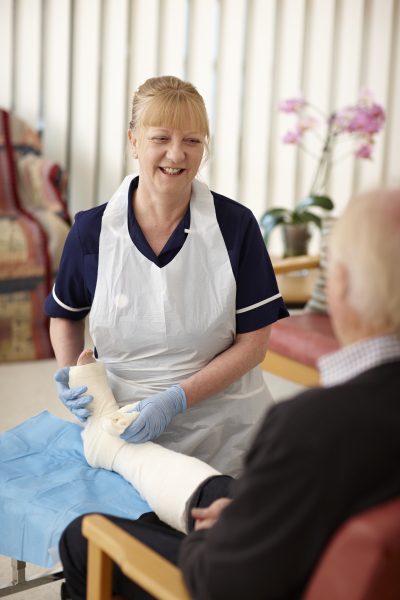
With easy-to-follow instructions, the application process for Larval Therapy takes less than 5 minutes of your time.
This pairs well with the effective and rapid debridement speed of the larvae, with the entire duration of treatment lasting just 4 days.
Larval Therapy can be successfully used on a number of different wound types, having been tried and trusted by clinicians for many years. There are very few contraindications to be aware of, and after conducting a wound suitability assessment, clinicians just need to ensure that they are competent to apply and follow the daily care processes.
Nursing time is reduced with an application process that is quick and simple, daily care that is not complicated, and debridement that is gentle and non-invasive for patients. In cases of patients who may not be suitable for surgical or sharp debridement, Larval Therapy is an incredibly effective alternative, and there is no compromise when it comes to achieving rapid debridement.
How does Larval Therapy work?
Larvae of the fly species Lucilia sericata (commonly known as the greenbottle fly) are wound debriders by nature.
With naturally selective tendencies, the larvae only debride devitalised tissue and leave healthy tissue structures untouched.
In a gentle yet rapid process, larvae secrete enzymes once in contact with the wound bed. It is these enzymes which soften devitalised tissue, allowing the larvae to swiftly debride a wound.
Follow Step-by-Step Application Instructions
Let us guide you through the application process:
1: Cleanse the wound bed with saline/water.
2: Apply barrier cream to the peri-wound edges.
3: Ensure to check that the larvae are viable for use prior to application.
4: Apply Larval Therapy product(s) onto the wound.
5: Place piece(s) of moist gauze over the top.
6: Cover with a non-occlusive dressing pad.
7: Secure the dressing pad in place using non-occlusive tape, bandages, or compression.
8. Daily dressing changes will be required, including re-applying fresh moistened gauze and topping up the layer of barrier cream.
BioMonde’s Advice
Prepare the items that you need for application beforehand.
Reassure patients and address any common misconceptions, prior to commencing treatment, to ensure best patient outcomes.
Providing that the clinician caring for the patient is confident and competent in their knowledge, application does not have to be overseen by a specialist.
Application can take place wherever a patient is based. Whether this is in hospital, a community surgery, a nursing home or even a patient’s home.
Larval Therapy is an accessible treatment, that can be a first-line option for debridement.
Points for Patient Reassurance
Larvae do not have teeth, only tiny mandibles which they use to debride.
Larval Therapy tends to be well-tolerated by patients, many of which only experience relatively low pain levels, if any pain at all.
Although gentle, the speed in which larvae debride is very quick, with the duration of treatment being just 4 days.
Most wounds are fully debrided within 2 treatments.
Further Information
For further advice or guidance on applying Larval Therapy products, contact our Clinical Support team on 0345 230 6806 or email ClinicalSupport@biomonde.com.
We have various learning options available on our website.
You can also download literature guides on Larval Therapy.


